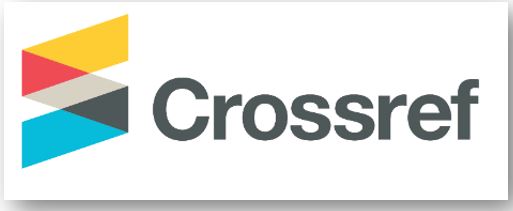Pendampingan Pengenalan Metode Bermain Peran dalam Mengembangkan Kemampuan Bahasa Anak Usia Dini di TKA/DTA/TPA Bustanul Ulum
DOI:
https://doi.org/10.61231/jp2m.v2i4.309Keywords:
Bermain Peran, Kemampuan Bahasa, Anak Usia DiniAbstract
The purpose of this mentoring activity is to introduce the role-playing method in developing language skills in early childhood which is useful as their vocabulary to be able to communicate with others. The mentoring implementation time is July 10, 2024. This service is carried out with a counseling and training approach. The results of community service activities, that the aspects that can be produced from applying the role-playing method in developing language skills are (1) children are able to string together words from a sound (phoneme), (2) children are able to recognize new vocabulary (morphology), (3) children are able to arrange words into a sentence (syntax), (4) children are able to use sentences according to purpose (semantics). In order for children's language skills to continue to develop, teachers and parents must often train children's language skills with various methods, one of which is the role-playing method so that children get more vocabulary to communicate
References
adinda Hafni Zahara. (2023). Penerapan Metode Bermain Peran Dalam Meningkatkan Kemampuan Bahasa Anak Kelas B1 Di Ra Perwanida Metro [Institut Agama Islam Negeri (IAIN) METRO]. chrome-extension://efaidnbmnnnibpcajpcglclefindmkaj/https://repository.metrouniv.ac.id/id/eprint/8429/1/SKRIPSI ADINDA HAFNI ZAHARA _ 1801032001 - Adinda Hafni Zahara.pdf
Afifah, N. (2019). Meningkatkan Keterampilan Bercerita Secara Kreatif Melalui Media “Finger Puppets” Di Kelas Iii Mi Kanjeng Sepuh Sidayu Gresik. 1–21. http://eprints.umg.ac.id/2459/
Dhieni Nurbiana. (2009). Metode Pengembangan Bahasa. Universitas Terbuka.
Fajriani, C., & Kurnia, S. D. (2020). Penerapan Metode Bermain Peran Dalam Mengembangkan Kemampuan Bahasa Pada Anak Usia Dini Kelompok B Di Taman Kanak-Kanak Nurul Yaqin Desa Uloe Kecamatan Dua Boccoe Kabupaten Bone. Jurnal Educhild, 2(2), 68–79.
Friantary, H. (2020). Perkembangan Bahasa Pada Anak Usia Dini. Zuriah?: Jurnal Pendidikan Anak Usia Dini, 1(2), 127. https://doi.org/10.29240/zuriah.v1i2.2100
Lexy J Moloeng. (2009). Metodologi Penelitian Kualitatif Edisi Revisi. Remaja Rosdakarya.
Moeslichatoen. (2004). Metode Pembelajaran di Taman Kanak-kanak. Rineka Cipta.
Ninik Uswatun Fadilah. (2006). MEDIA PEMBELAJARAN: Definisi, Manfaat dan Jenisnya dalam Pembelajaran. chromeextension://efaidnbmnnnibpcajpcglclefindmkaj/https://bdkdenpasar.kemenag.go.id/upload/files/Artikel Media Pembelajaran.pdf
Pebriana, P. H. (2015). Karakteristik AUD. Analisis Standar Pelayanan Minimal Pada Instalasi Rawat Jalan di RSUD Kota Semarang, 3, 103–111.
Sentosa, A. R., & Apriliani, N. (2020). Pemerolehan Bahasa Pada Anak Usia Dini (Kajian Psikolinguistik). Seminar Nasional Pendidikan, 1–7.
Suardi, I. P., Ramadhan, S., & Asri, Y. (2019). Pemerolehan Bahasa Pertama pada Anak Usia Dini. Jurnal Obsesi?: Jurnal Pendidikan Anak Usia Dini, 3(1), 265. https://doi.org/10.31004/obsesi.v3i1.160
Sugiyono. (2015). Metode Penelitian Pendidikan Pendekatan Kuantitatif, Kualitatif, Dan R&D. ALFABRTA CV.
Versatile Holiday Lado. (2022). Pengertian Bahasa, Peran & Fungsi Bahasa secara Umum di Masyarakat. tirto.id. https://tirto.id/pengertian-bahasa-peran-fungsi-bahasa-secara-umum-di-masyarakat-gdhW
Wicaksana, A., & Rachman, T. (2018). Meningkatkan Kemampuan Berbahasa Anak Menggunakan Metode Circle Time Pada Kelompok B Tk. Dharma Wanita Desa Bendung Kecamatan Jetis Kabupaten Mojokerto. Angewandte Chemie International Edition, 6(11), 951–952., 3(1), 10–27. https://medium.com/@arifwicaksanaa/pengertian-use-case-a7e576e1b6bf
Widyatrini, W. (n.d.). Metode Bermain Peran Dalam Keterampilan Berbicara Siswa Kelas V. Universitas Negeri Surabaya, 1–5.
Yuliani Nurani sujiono. (2016). Konsep Dasar pendidikan Anak Usia Dini. PT Indeks Permata Puri Media.
Downloads
Published
How to Cite
Issue
Section
License
Copyright (c) 2024 Dita Kumala Sari

This work is licensed under a Creative Commons Attribution 4.0 International License.
You are free to:
- Share — copy and redistribute the material in any medium or format for any purpose, even commercially.
- Adapt — remix, transform, and build upon the material for any purpose, even commercially.
- The licensor cannot revoke these freedoms as long as you follow the license terms.
Under the following terms:
- Attribution — You must give appropriate credit , provide a link to the license, and indicate if changes were made . You may do so in any reasonable manner, but not in any way that suggests the licensor endorses you or your use.
- No additional restrictions — You may not apply legal terms or technological measures that legally restrict others from doing anything the license permits.
Notices:
You do not have to comply with the license for elements of the material in the public domain or where your use is permitted by an applicable exception or limitation .
No warranties are given. The license may not give you all of the permissions necessary for your intended use. For example, other rights such as publicity, privacy, or moral rights may limit how you use the material.


















